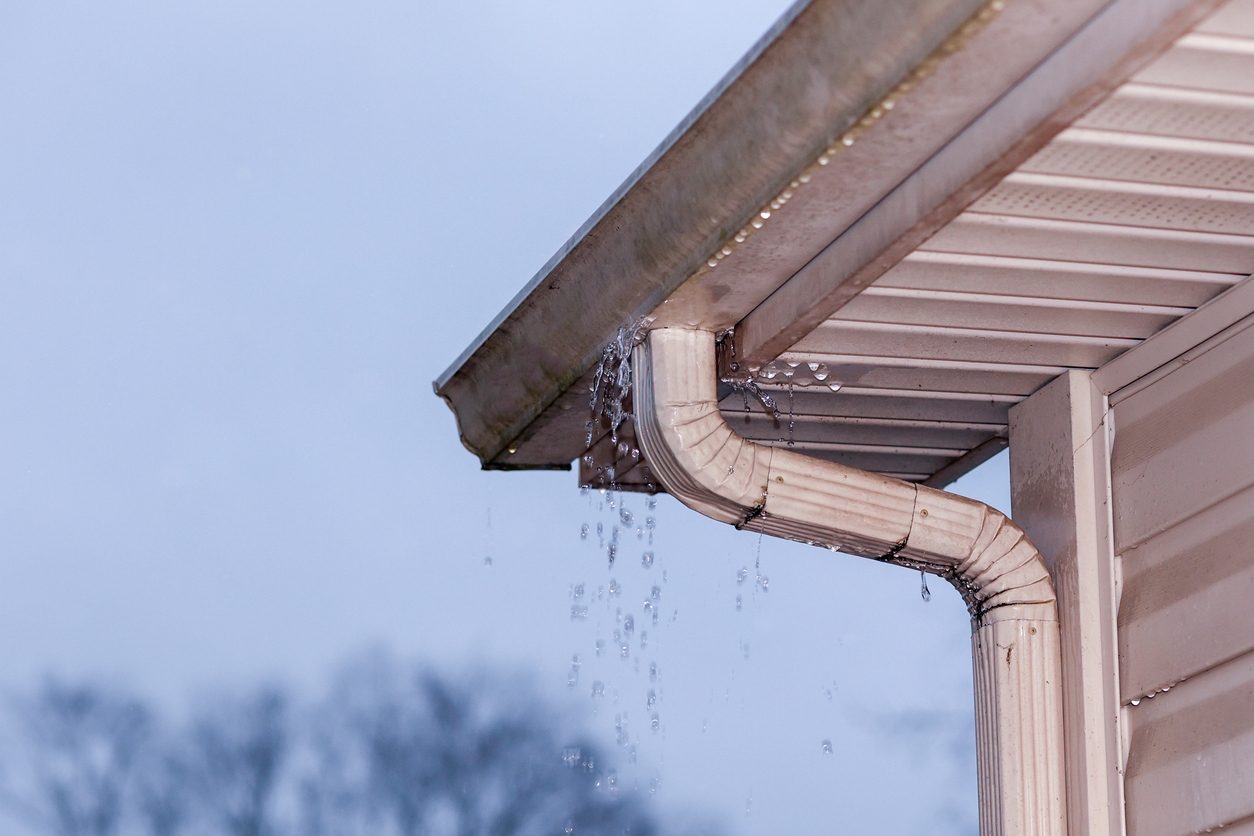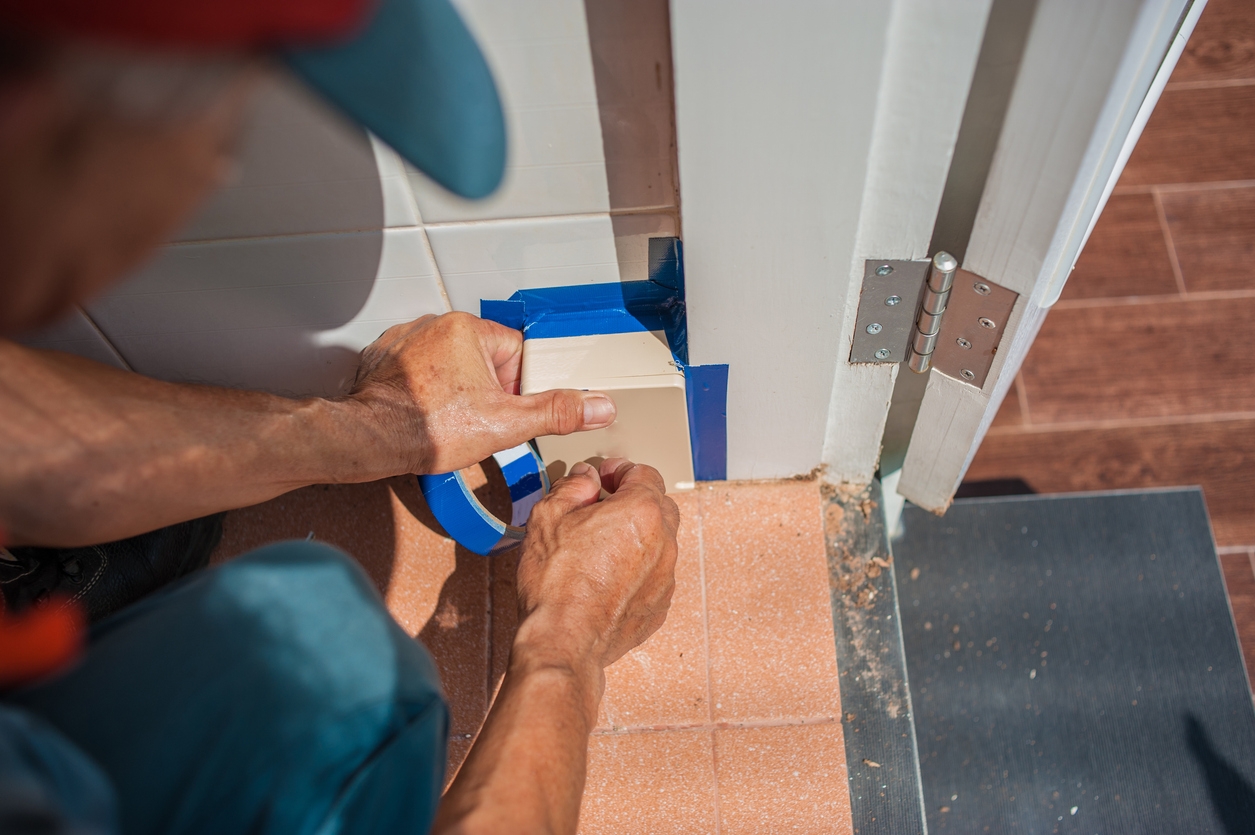If you’re a homeowner, you know that protecting your property is a top priority. One of the best ways to safeguard your home against weather and insect damage is by maintaining a good coat of paint. It might seem surprising, but a fresh layer of paint makes your house look nice and protects against the elements and pesky critters.
How Does Paint Protect Your Home?
Besides adding some color to your exterior, paint acts as a barrier against the elements, helping to protect your home from weather and insect damage.
Think of it as your home’s first line of defense. When applied correctly, it forms a protective layer over your exterior surfaces, sealing out moisture, pests, and even harmful UV rays. Regular maintenance and proper application ensure this protective barrier stays effective. Over time, paint can chip, peel, or fade, so it’s essential to keep an eye on it and touch up or repaint as needed.
Here are the elements that paint can protect your house from:
Moisture and water damage
One of the biggest threats to your home is moisture. Water can seep into cracks and crevices, leading to wood rot, mold, and structural damage. A good coat of paint creates a waterproof barrier that helps prevent water penetration. Paint protects your home from the inside out by keeping moisture out, saving you from costly repairs.
UV radiation
The sun can be harsh on your home’s exterior. UV rays cause paint to fade and can even damage the underlying materials. High-quality paint contains UV-resistant properties that protect against sun damage, keeping your home vibrant and fresh for longer. This enhances curb appeal and extends the life of your exterior surfaces.
Temperature fluctuations
Your home experiences a range of temperatures throughout the year. From hot summer days to chilly winter nights, these fluctuations can cause the materials in your home to expand and contract. Paint helps by providing an insulating layer that resists these changes, reducing the risk of cracking, peeling, and other damage. This insulation also helps maintain a stable interior temperature, improving energy efficiency.
Insect damage prevention
Insects can be a major nuisance, but they can also cause significant damage to your property if left unchecked. Some of the most common culprits include termites and carpenter ants, which can chew through wood and compromise the structural integrity of your home.
Fortunately, the right paint and finishes can help deter these pests. Certain paints contain unappealing ingredients to insects, effectively creating a barrier they don’t want to cross. These paints can help keep your home safe from infestation and the costly repairs that come with it. Regularly inspecting your paint and reapplying as needed ensures this protective barrier remains intact.
Protection against freezing
Freezing temperatures can be especially tough on your home. When water gets into small cracks and then freezes, it expands, causing the cracks to widen and potentially leading to significant damage. A good layer of paint helps seal these cracks and prevent water from getting in, offering protection against the freeze-thaw cycle.
Insulation and energy efficiency
A well-painted home doesn’t just look good; it can also be more energy-efficient. Quality paint acts as an extra layer of insulation, helping to keep your home warmer in the winter and cooler in the summer. This can lead to lower energy bills and a more comfortable living environment. Choosing paints designed for insulation can further enhance these benefits, making your home more efficient and eco-friendly.
Weatherproofing
Weatherproofing is all about ensuring your home can withstand whatever Mother Nature throws. Paint plays a crucial role in this by providing a protective shield against rain, snow, wind, and even salt in coastal areas. Weatherproof paints are specially formulated to be more resilient, offering superior protection and durability. Regularly maintaining your paintwork ensures that this weatherproofing remains effective, helping your home to stand strong through all seasons.
How to Choose the Right Paint
When it comes to protecting your home from weather and insect damage, not all paints are created equal. Here are a few types of paints designed specifically for these challenges:
Types of Paints
- Weather-resistant paints: These are formulated to withstand harsh weather conditions. They offer superior protection against moisture, UV rays, and temperature fluctuations. Look for paints labeled as “exterior” or “weatherproof.”
- Insect-repellent paints: Some paints are specifically designed to deter insects. These contain additives that make the surface less appealing to pests like termites and carpenter ants.
- High-quality, durable paints: Investing in high-quality paints might be a bit more expensive upfront, but it pays off in the long run. Durable paints last longer, resist peeling and fading, and provide better protection against the elements and insects.
Using high-quality, durable paints is crucial for ensuring the longevity and effectiveness of your home’s protective barrier. Cheap paints might save you money initially, but they often require more frequent touch-ups and replacements. High-quality paints provide better coverage, longer-lasting protection, and a more attractive finish.
How to Apply Paint for Maximum Protection
Getting the most out of your paint job requires more than just picking the right paint. Proper application techniques ensure your home is well-protected against weather and insect damage. Here are some tips to help you achieve maximum protection:
1. Prep and prime.
Before you start painting, it’s crucial to prepare the surface properly. This means cleaning the exterior to remove dirt, mold, and old, flaking paint. Sanding rough areas and filling in cracks and holes will create a smooth surface for the new paint to adhere to.
Priming is another essential step. A good primer helps the paint stick better and provides an extra layer of protection. It also seals the surface, ensuring that the topcoat of the paint looks even and lasts longer. Don’t skip this step—it makes a big difference in the durability and appearance of your paint job.
2. Apply multiple coats.
Applying multiple coats of paint is key to achieving thorough coverage and long-lasting protection. One coat might look good initially, but it often isn’t enough to withstand the elements over time. Two or even three coats can provide a more durable finish that better resists peeling, chipping, and fading.
Be sure to allow adequate drying time between coats, and pay attention to the manufacturer’s instructions for the best results. Thorough coverage, especially on edges and corners, ensures that every part of your home is well-protected.
3. Inspect regularly and touch up if necessary.
Even the best paint job needs regular maintenance. Inspect your home’s exterior at least once a year for signs of wear and damage. Look for cracks, peeling paint, or areas where moisture might be seeping in. Addressing these issues promptly with touch-ups or additional coats of paint can prevent more significant problems down the road.
Conclusion
A good quality paint job acts as a shield, keeping moisture, UV rays, and pests at bay. If you’re ready to give your home the protection it deserves, consider reaching out to Custom Painting, Inc. Our team of professionals is here to help you choose the best products and ensure your paint job is done right. Call us today at 925-686-0903 to get started on safeguarding your property for years to come!




